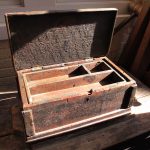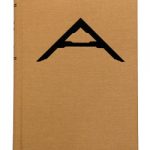We may receive a commission when you use our affiliate links. However, this does not impact our recommendations.
 I’ve just received Adam Cherubini’s Arts & Mysteries column for the February 2012 issue, and I’m delighted that he’s written about boarded furniture – one of his topics at our 2011 Woodworking in America conference.
I’ve just received Adam Cherubini’s Arts & Mysteries column for the February 2012 issue, and I’m delighted that he’s written about boarded furniture – one of his topics at our 2011 Woodworking in America conference.
While I didn’t get to see his presentation, it’s been generating a lot of buzz on various woodworking blogs, and it’s nice to read more about it from the guy who kicked off the discussion. I don’t want to give too much away, but here are a couple quotations from Adam’s upcoming article:
“‘Boarded’ is an archaic English term that was used to describe a form of woodwork characterized by the use of fasteners as the principle means of attachment. The iconic 6-board chest is probably the most familiar boarded furniture form.
“Builders of boarded items also had to deal with the challenge of joining boards at right angles. Many of us believe the best way to join boards is either with dovetails or mortise-and-tenons. Builders of boarded furniture typically did neither. They generally did what most of us believe to be a terrible mistake; they nailed boards together ‘cross grain.'”
And that’s all I’m going to give away from Adam’s article – you’ll have to wait for the February 2012 issue to read the rest (if you’re a digital subscriber, look for that issue on or around Dec. 28; if you subscribe to the print edition, start checking your mailbox the first week of the new year).
While not all boarded furniture was held together with nails (think metal straps and wooden pegs), much of it was. But these weren’t the wire nails you can pick up in a box at the home center, or that shoot out of the end of a nail gun (though, having installed a lot of moulding in my house, I admit to an enduring affinity for nail guns). These were forged nails up until the mid 19th-century, and possibly cut nails after that.
The major difference between today’s wire nails and traditional forged or cut nails is the shape. Wire nails are straight and round; forged and cut nails are wedge-shaped – and they hold better. I’m not going to belabor the topic. You can read more about cut nails in a number of places, including this recent post from Joel Moskowitz from Tools for Working Wood (where, by the way, cut nails from Tremont are now available in small quantities).
I’ve mentioned before that many of our I Can Do That articles could technically be defined as “boarded furiture” – but of course, because all of those projects use materials available at the home center, cut nails aren’t used.
Instead, we often substitute masonry nails, which have the same shape and look as a traditional forged or cut nail, but are made of hardened material. That’s a major difference, because hardened nails don’t offer the same pliability as forged and cut nails. That, is, they don’t move as much with the material during seasonal expansion and contraction, and, perhaps most notable, they can’t be clenched (a.k.a. clinched).
Also, with maybe one or two exceptions, all the ICDT joints are butt joints, and traditional boarded furniture used rabbets, dados and grooves to strengthen the joinery (which, of course, an enterprising builder could certainly add to any ICDT plan).
 So, here’s a simple and handsome project that can more properly be considered boarded furniture: a Simple Shaker Hanging Cupboard that Christopher Schwarz built for our Februrary 2011 issue. It’s an excellent introduction to using cut nails, including how to clench them.
So, here’s a simple and handsome project that can more properly be considered boarded furniture: a Simple Shaker Hanging Cupboard that Christopher Schwarz built for our Februrary 2011 issue. It’s an excellent introduction to using cut nails, including how to clench them.
Download a PDF of the article by clicking below:
p.s. If you’re looking for a new project to tickle your fancy, but don’t want to buy an entire book, check out the hundreds of project downloads we now have available at ShopWoodworking.com under the “Browse by Product” tab then “Woodworking Downloads” category “(where you’ll also find a number of books and mini-books in PDF format).
Here are some supplies and tools we find essential in our everyday work around the shop. We may receive a commission from sales referred by our links; however, we have carefully selected these products for their usefulness and quality.









That’s one sexy hammer. I love a good hammer. Anyone else?
I wonder if anyone has attempted to anneal masonry nails to make them softer? That might be an alternative to cut nails.
This takes me right back to my
youth, everything was nailed
back then. ;0)